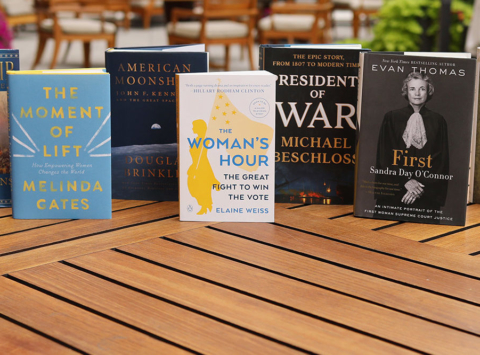Earlier this month, a thought-provoking video from Microsoft caught my eye. In the video, young girls are asked to name inventors. After quickly rattling off names like Nikola Tesla, Einstein and Edison, they are then asked to name female inventors. Sadly, this question is met with almost deafening silence. Each and every one of these future innovators is left stumped.
Which made me wonder, how many female innovators could I name?
One of the girls featured in the video provides brilliant insight when she says, “In school it was always a male inventor.” That definitely struck a chord with me. Thinking back to my own textbooks, it wasn’t hard to find examples of great inventors who used their grit or genius, or a combination of both, to change the world. My own science and history lessons were filled with stories of inventors and innovators commended and applauded for their ingenuity—it’s just that they happened to mostly all be men.
We know about Marie Curie and maybe a handful of other female trailblazers, but there are so many other women in arts, sports, science, technology, business and medicine who are not yet household names—not because they don’t exist but because they simply did not have the same recognition in their day, or the same spotlight and celebration of their contributions.
While we all could name Thomas Edison for instance, we probably don’t think of Margaret Knight, nicknamed “the lady Edison” and credited with receiving 27 patents in her lifetime for inventions including an internal combustion engine and shoe-manufacturing machines. Or take Beulah Louise Henry, also referred to as “Lady Edison” (notice a trend here?), who was awarded nearly 50 patents over her lifetime and had more than 100 inventions to her name including the can opener.
Women are responsible for an endless number of inventions and innovations that improve everyday life, from the car heater (Margaret A. Wilcox) to the fire escape (Anna Connelly), to the life raft (Maria Beasely) and medical syringe (Letitia Geer). It was Tabitha Babbitt who invented the circular saw, Sarah Mather, who made the underwater telescope possible, and Dr. Maria Telkes and Eleanor Raymond who built the first home entirely heated by solar power in 1947.
In the fields of science and discovery, the contributions of women have changed the world and our understanding of it. The work of Rachel Carson, a marine biologist who brought environmental concerns to an unprecedented share of the American people in her book Silent Spring, led to the nationwide ban on DDT and other pesticides. Her work inspired a grassroots environmental movement that led to the creation of the EPA. Dr. Anne Tsukamoto, an inventor named on seven issued U.S. patents related to the human hematopoietic stem cell and gene transfer methods, today is credited with advancing the field of stem cell research.
As another Women’s History Month draws to an end, we owe it to ourselves and to the next generation to start changing the conversation about innovation and ensure that we are lifting up equally innovators who in years past may have been unsung, as well as those that emerge in our contemporary times.
Today, the Case Foundation team kicks off its first ever “Innovation Madness,” a clear nod to the NCAA’s basketball tournament, but also a way to celebrate women innovators that too often go unnoticed and unmentioned. Over the next ten days, we will profile fearless women who have transformed the world as we know it by modeling audaciousness and remarkable achievement across disciplines. Check out the instructions on how to participate in #InnovationMadness and vote for your favorite innovators on Twitter. While we have a serious goal of spotlighting extraordinary women so their stories are known, we also hope to have some fun along the way. I hope you’ll join us and help spread the word about the amazing accomplishments of some of these extraordinary women.





